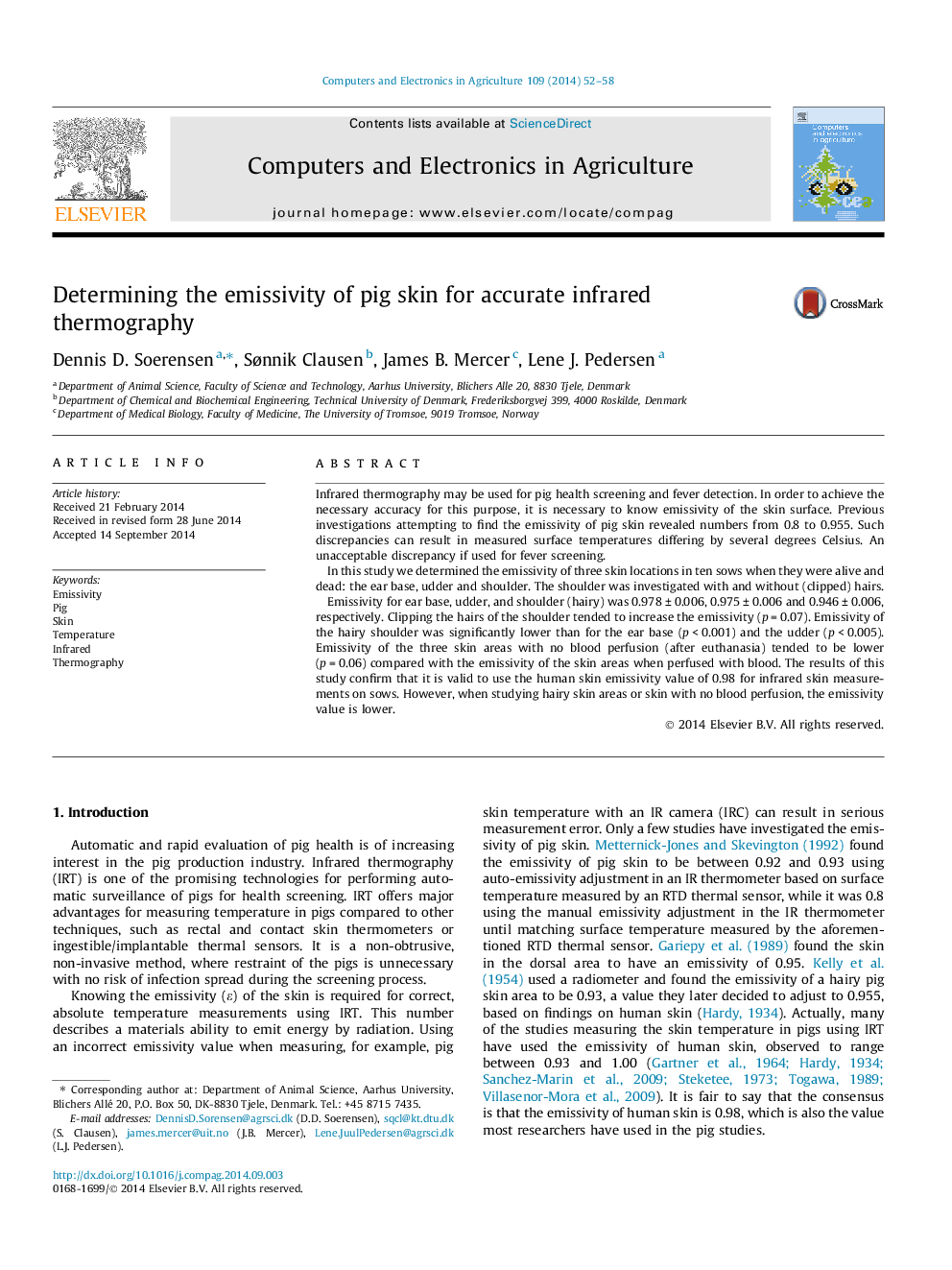| Article ID | Journal | Published Year | Pages | File Type |
|---|---|---|---|---|
| 84224 | Computers and Electronics in Agriculture | 2014 | 7 Pages |
•Bare pig skin emissivity at shoulder, udder and ear base was found to be 0.96–0.98.•Hairs lowered the emissivity by 0.018 ± 0.010 (p = 0.070).•Skin emissivity was reduced by 0.012 ± 0.006 (p = 0.062) with no blood perfusion.
Infrared thermography may be used for pig health screening and fever detection. In order to achieve the necessary accuracy for this purpose, it is necessary to know emissivity of the skin surface. Previous investigations attempting to find the emissivity of pig skin revealed numbers from 0.8 to 0.955. Such discrepancies can result in measured surface temperatures differing by several degrees Celsius. An unacceptable discrepancy if used for fever screening.In this study we determined the emissivity of three skin locations in ten sows when they were alive and dead: the ear base, udder and shoulder. The shoulder was investigated with and without (clipped) hairs.Emissivity for ear base, udder, and shoulder (hairy) was 0.978 ± 0.006, 0.975 ± 0.006 and 0.946 ± 0.006, respectively. Clipping the hairs of the shoulder tended to increase the emissivity (p = 0.07). Emissivity of the hairy shoulder was significantly lower than for the ear base (p < 0.001) and the udder (p < 0.005). Emissivity of the three skin areas with no blood perfusion (after euthanasia) tended to be lower (p = 0.06) compared with the emissivity of the skin areas when perfused with blood. The results of this study confirm that it is valid to use the human skin emissivity value of 0.98 for infrared skin measurements on sows. However, when studying hairy skin areas or skin with no blood perfusion, the emissivity value is lower.
